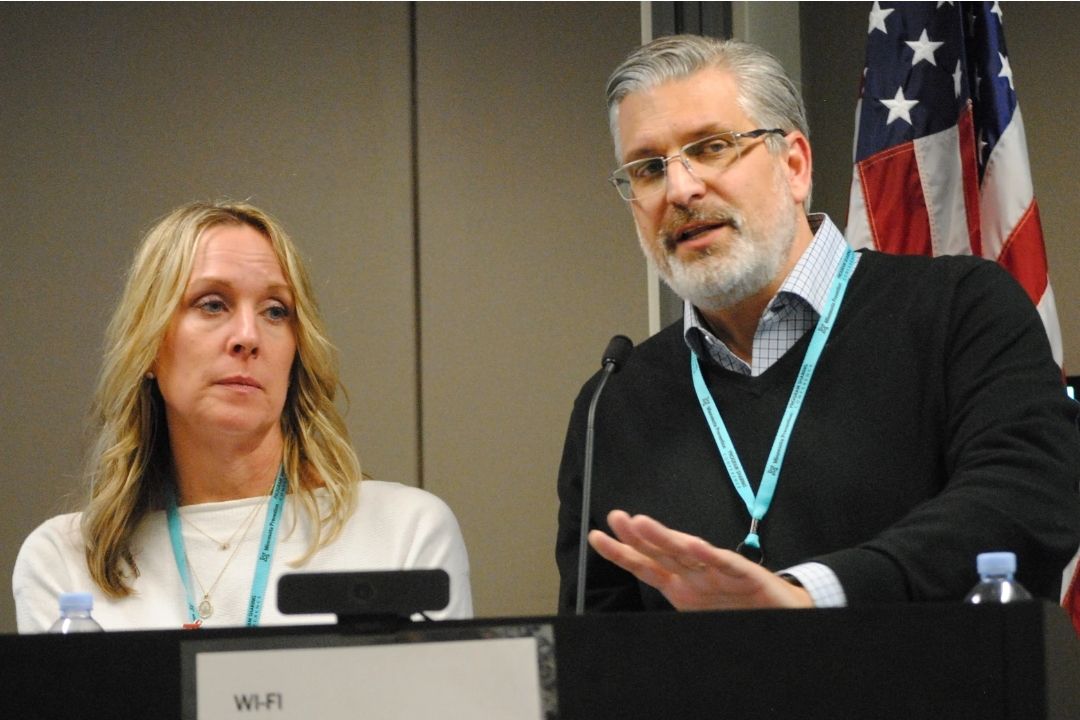|
Back to Prevention Stories
Be Extraordinary, Be You.
Hosted by:
Chemical Health Coalition of Yellow Medicine County

Please briefly describe your Communities Talk activity.
We were able to bring Heather and Randy Bacchus from “Be Extraordinary, Be You” to speak to our tri-county service region. During their time here, they were able to educate Renville County, Kandiyohi County, and Countryside Public Health; host a town hall meeting in each county; and speak at four different schools. They shared the dangers of today’s high-potency cannabis and the harms that can come from it. They spoke of their personal journey with their son, who struggled from cannabis use disorder, cannabis-induced psychosis, and eventual suicide.

How does alcohol and other drug misuse affect your community?

Alcohol and other drug misuse significantly impacts our community, particularly through the increasing concerns around high-potency cannabis and its associated risks. In our tri-county service region, we’ve witnessed firsthand the devastating effects of substance misuse, including the tragic case shared by Heather and Randy Bacchus during their recent talks. Their personal story highlighted the profound consequences of cannabis use disorder, including mental health crises and, ultimately, suicide. Local leaders have recognized this urgent need for prevention, prompting calls for increased education and resources. In Renville and Kandiyohi counties, we are seeing a rise in community dialogue around substance misuse, with town hall meetings aimed at addressing these issues directly. Additionally, concerns are mounting regarding youth exposure to high-potency cannabis, which has been linked to a range of mental health issues. While I don’t have specific local data at the moment, reports and studies on substance misuse trends in our area are essential for understanding the scope of the problem and developing effective prevention strategies. These ongoing discussions are crucial for fostering a supportive environment that prioritizes the health and safety of our community members.

Which prevention strategy(ies), as defined by SAMHSA’s Center for Substance Abuse Prevention, best fit your Communities Talk activity?
- Information Dissemination Strategy - focuses on improving awareness and knowledge of the effects of AOD issues on communities and families through “one-way” communication with the audience such as speaking engagements, health fairs, and distribution of print materials.
- Education Strategy - focuses on “two-way” communication between the facilitator and participants and aims to improve life/social skills such as decision making, refusal skills, and critical analysis.

What goal(s) did you hope to accomplish with your Communities Talk activity?
- Hold meetings or discussion groups on alcohol and/or other drug misuse prevention.

Did you accomplish your goal(s)?
Yes

What challenge(s) did you face in planning your activity this year?
- Lack of interest from the community

How did you overcome these challenges?
To address the challenge of low community interest and turnout at our events, we implemented several strategic steps. First, we actively sought partnerships with local organizations, schools, and community leaders to help amplify our message and reach a wider audience. By collaborating with these stakeholders, we were able to leverage their networks to promote our activities more effectively. We also adapted our outreach strategies. Instead of relying solely on traditional marketing methods, we embraced social media and local community boards to share personal stories and insights from speakers such as Heather and Randy Bacchus. This approach aimed to create a more relatable connection to the topic and engage the community on a personal level. Overcoming these challenges taught us the importance of community involvement and tailored messaging. We learned that engaging the community requires persistent effort and adaptability, and that personal stories can be powerful motivators for participation. Ultimately, these experiences shaped our final Communities Talk activity, making it more inclusive and responsive to community needs, which will guide our future initiatives.

What are your next steps?
- Expand our coalition with new partnerships in the community
- Support new prevention policies, legislation, or social ordinances
- Conduct research efforts to learn more about issues in our community
- Create a public education campaign to raise awareness and/or change behaviors around underage drinking (i.e., create PSAs and other promotional materials)

Organizations that conduct Communities Talk activities often involve other organizations in the planning and execution of events. Please indicate which type(s) of organizations you involved in your activity planning.
- Secondary schools
- Local businesses
- State and local government agencies (e.g., public health departments)

Which of the following best describes the primary audience(s) for your Communities Talk activity?

How did you reach and engage your primary audience(s) to encourage them to participate in your activity?
We reached our audience via email and social media channels through the local coalitions, schools, and public health entities.

Which Communities Talk resources (or other SAMHSA resources) were most helpful for your activity?
- Prevention-related webinars
- Customizable Resources for Communities Talk Promotion and Implementation
- Communities Talk website
- Communities Talk planning guides
- Communities Talk toolkits
- Communities Talk social media content (e.g., Facebook, Twitter)
|
|